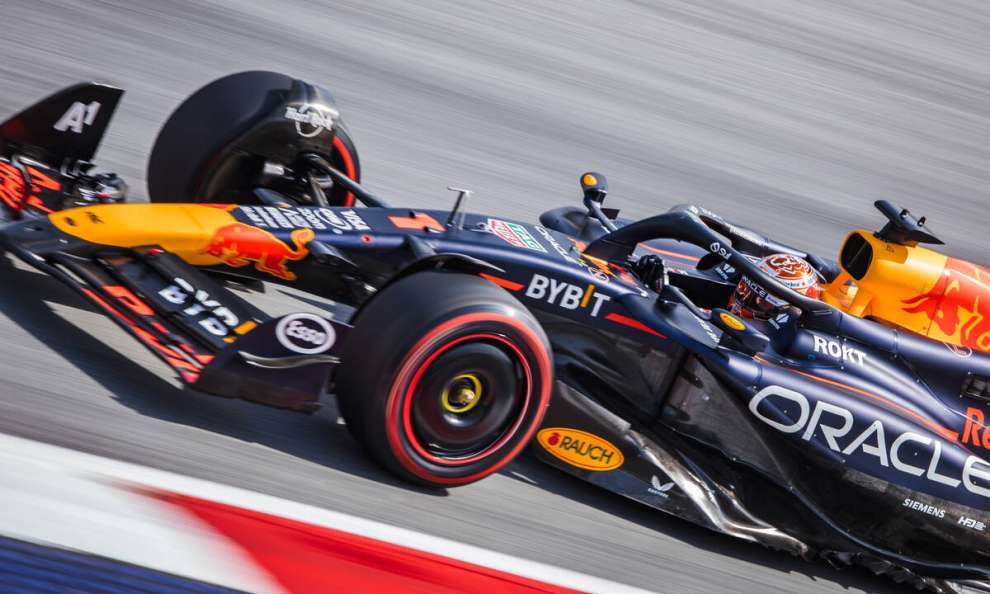By Carlo Platella
At the Red Bull Ring, we are heading towards another strategically lively race, after the already lively event in Barcelona. The front row sees Max Verstappen and Lando Norris face off, with both having the possibility of playing with strategies to surprise their opponent, possibly even resorting to a triple pit-stop. The key will be Rear degradation management exiting the hairpin bends, as he explains to FormulaPassion Simone Berra, Pirelli Chief Engineer.
Full track
“This is a track where there is a lot of thermal degradation, due to the fact that there are sectors like the first one with a particularly high demand for traction, especially out of turns 1, 3 and 4”Berra illustrates. “Then there are the last two sectors with medium and high speed corners, where good stability and a very precise front are needed. In the end it is a very complete circuit. We know that thermal degradation is significant and affects both the front and rear.”
The first signs of degradation emerged already during the Sprint race, despite temperatures and fuel loads being lower than those expected on Sunday: “During the Sprint we saw some teams suffer a bit from thermal degradation. Verstappen’s seemed to be the most consistent car from this point of view on a relatively long stint, while other cars struggled a bit more towards the end. Temperatures and degradation are relatively high. We expect to have the same temperatures today, so to be around 48-49 degrees of asphalt, going to raise both the carcass and surface temperatures quite a bit”.
The racing tires
Pirelli rules out the use of the soft tyre in the race, having recorded a loss of performance of between 3 and 4 tenths after the first lap: “On the compound side we saw that the hard and medium are relatively consistent, while the soft tends to be a single lap tire”. The simulations predict a degradation of the average tire of just under a tenth per lap, slightly more contained for the hard tire. “The hard tyre is a C3, which is basically a compound that we consider quite soft. Therefore we expect a two-stop race. On paper even triple stopping is closer to double stopping than this is to the single. The double pit stop is 10 seconds quicker than the single, while the three-stop is only 3-4 seconds slower.”
“We expect everyone will go on the two-stop,” Berra continues. “There are teams that have two sets of medium tyres and others that have two sets of hard tyres. For this reason there will be two types of strategies: media-hard-media or media-hard-hard. The grid is divided in half from this point of view and it depends a bit on the teams which compound they preferred to keep for the race.” In both scenarios, the average appears to be the most suitable compound for the start: “Someone might start on the hard to try to pull away a bit, but objectively it doesn’t give you any big advantage. On a long stint the hard doesn’t seem to be a more consistent option than the medium, which gives you the extra grip at the start. We know that Turn 1 is quite close, so if you want to try to make up a few positions it’s better to start on the medium.”

Stretching is possible
Although a certain homogeneity is expected in the choice of compounds and number of stops, Pirelli believes that the teams still have the margins to differentiate their strategies: “Teams can come up with something”, Berra continues. “Those who are able to manage thermal degradation better and have done a better job of protecting the temperatures at the rear can perhaps think about extending the stint further if some DRS trains form.”
“If the cars in front stop and you have better tire management, you can think about doing a few more laps than your rivals, and then having a better performing tire in the following stint. Overtaking can be done here, there are three DRS zones. Obviously it’s not a good idea to stay too far behind another car, as traffic causes overheating. Basically, however, tire management will be important, so there may be variations in strategy on the timing of the stop.”
Hunting for Max
A few hours after the traffic lights went out, Pirelli has quite clear ideas about the number one favourite: “I expect a very consistent Verstappen on race pace. I see instead McLaren, Ferrari and Mercedes very close to each othermaybe McLaren with a little more. The key will be to understand the differences in race pace, which yesterday came out little during the Sprint, while perhaps today they will emerge a little more”.

The most credible candidate to challenge Verstappen for the victory is Lando Norris. In the Sprint the British driver was quite aggressive in immediately attacking the world champion, aware of having to exploit the fresh tyres as soon as possible before they overheated. A tactic that he could also replicate in the race: “It would make sense to attack immediately also to put pressure on Red Bull and Verstappen. Yesterday, Norris attacked immediately and put Red Bull in difficulty, but on the other hand he ruined his first part of the race a bit and consequently also the second, because he exploited the tyre too much. You also have to be very calm so as not to be too aggressive at the start. The race is over many laps, more than 70, so then there are possibilities. If McLaren were to prove to be a consistent car on race pace as it has been in previous races, then it would have some cards to play”concludes Berra.
#Austria #Pirelli #strategies #McLaren #Ferrari #Mercedes #close
